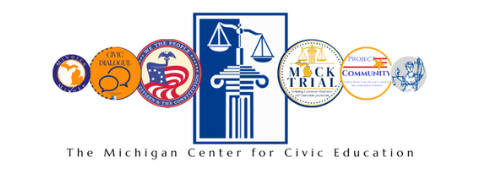This case summary provides teachers with everything they need to teach about Brown v. Board of Education (1954). It contains background information in the form of summaries and important vocabulary at three different reading levels, as well a review of relevant legal concepts, diagram of how the case moved through the court system, and summary of the decision. This resource also includes nine classroom-ready activities that teach about the case using interactive methods.
Civics Lessons
Brown v Board of Education (1954)
The U.S. Constitution: Continuity and Change in the Governing of the United States
This unit examines continuity and change in the governing of the United States. Lessons one and two are focused on a study of the Constitution and Bill of Rights and provide access to primary source documents from the Library of Congress. Lesson three investigates important issues which confronted the first Congress and has students examine current congressional debate over similar issues. Lesson four features broadsides from the Continental Congress
Appellate Courts: Let’s Take It Up
Students learn what happens in appellate-level courts and how those courts operate differently from the trial courts most people are familiar with from watching television. By following the case of a real middle school girl who was strip searched at school, students find out what happens when someone takes a case all the way to the Supreme Court. Through this case, students learn about the structure of the federal court system and the way appellate courts decide cases.
Becoming an Informed Voter: Preparing for the General Election
This lesson focuses on a voter’s need to be fully informed prior to casting a vote on Election Day and how to acquire the necessary information. Students learn what a yes or no vote or a decision to abstain means on a ballot. Students learn the definitions of amendment,initiative, and referendum. Students are given the opportunity to think critically and to learn firsthand why voters need to be fully informed about ballot questions.
Electing a President
This lesson starts with a political cartoon, then leads into discussion about the Electoral College and electing the U.S. President.
Equal Justice Under Law
In this lesson, students explore the cause-and-effect relationships
between historical events and the development of constitutional
principles that protect the rights of all people in America today. In its first constitutional challenge to the equal protection clause of the Fourteenth Amendment, the U.S. Supreme
Court decided to hear a case brought by a Chinese immigrant, not an American citizen.
Texas v Johnson: Is There a Constitutional Right to Burn the American Flag?
This lesson explores Texas v. Johnson, the 1989 Supreme Court decision on flag burning. First, students read about and discuss Texas v. Johnson. Then in small groups, students role play aides to a U.S. senator on the Judiciary Committee. The committee is considering a proposed amendment to the U.S. Constitution banning flag burning, and the aides must make a recommendation on whether the
senator should support or oppose the proposed amendment.
We the Students: Writing a Class Constitution
The Preamble to the U.S. Constitution sets out the purposes or functions of American government as envisioned by the framers. Using the Preamble as a guide, students will identify the purposes of their own classroom and create a class “constitution.”
Cyberbullying
Deliberating in Democracy Lesson which gets students to deliberate whether schools should punish students for off campus cyber bullying
Juvenile Justice
Deliberating in Democracy lesson which gets students to deliberate the question-Should violent juvenile offenders be punished as adults?

